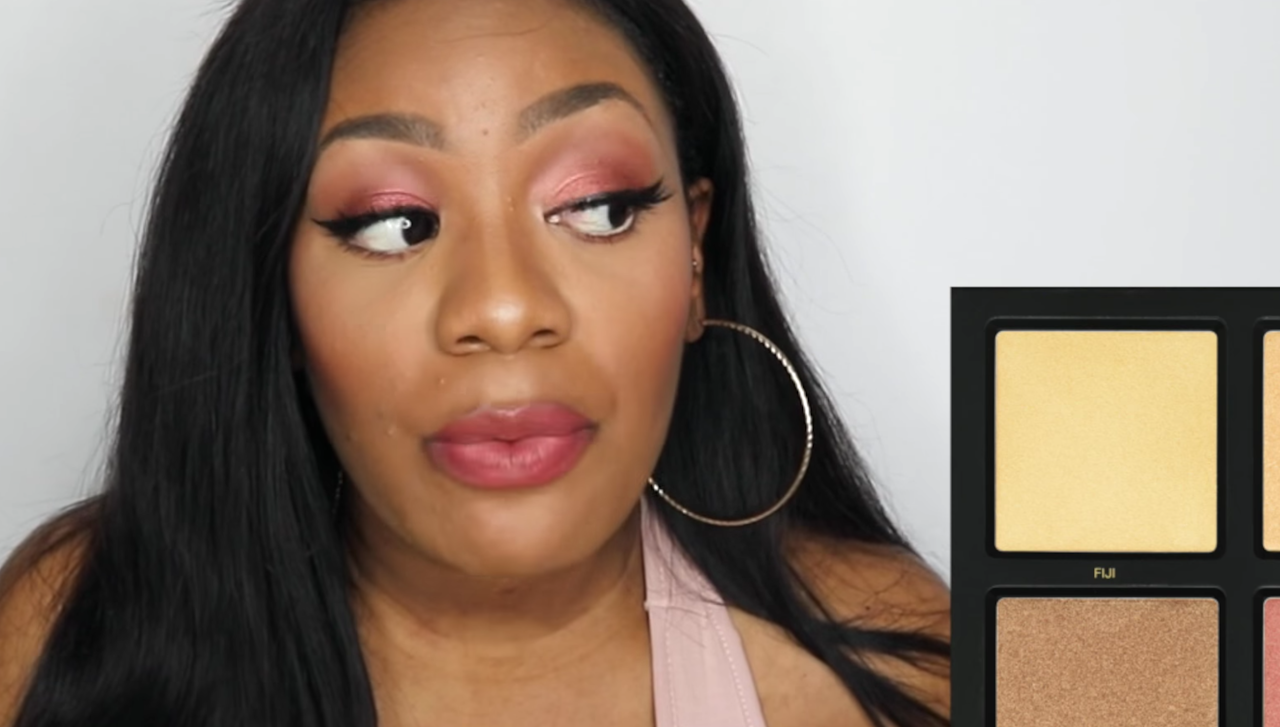Kimberly Clark’s first anti-haul, “What I’m Not Gonna Buy - Holiday 2015,” is a 24-minute long video that begins with a dolled-up Clark jingling a bell and rolling her eyes. She goes through a list of 14 beauty products she intends on never buying because she believes they’re overpriced and useless, including a NARS cheek palette for $69, a Marc Jacobs eyeshadow set for $99, and an Urban Decay palette for $60.
Clark talks about having a “transcendent experience” after viewing a ton of holiday palette reviews and reaching a “saturation point” that compelled her to rein in the urge to buy.
“I really think that because I'm not getting all of this stuff, it's making the things that I have… feel more special,” she said. “The more shit I accumulate, the harder it is for me to use things.”
Anti-hauls have gained a special status in the YouTube makeup community, where videos typically point to products
Clark’s video, which now has more than 86,000 views, elicits emotional responses from viewers. In the comments section, people beg her to do more of these videos and profusely thank her.
In another video titled “Consumerism,” Clark gets straight to the point, “We often behave illogically in the interest of consumerism. For example, denying the reality of our financial situation.”
There are several video types that tend to be evergreen on YouTube. There are product reviews, how-to videos, quick explainers, everyday vlogs, gaming videos, comedic skits, unboxing videos, and on and on. One popular format is the “haul” video, in which YouTubers display their purchases and recount the prices they paid after a shopping trip. Haul videos get millions of views, but recently, YouTube has seen a reaction to these in the form of “anti-hauls.” A search for anti-hauls on YouTube, as of this writing, yielded more than 850,000 results.
Most anti-haul videos are somewhere between 12 to 20 minutes long, and typically focus on beauty products. The host details a list of things they don't plan to buy and the reasons why not while detailing the often exorbitant prices. There are anti-hauls about Kylie Cosmetics, Sephora, Colourpop, Maybelline, and other brands. These videos have gained a special status in the makeup community on YouTube where cosmetics-focused videos — whether in tutorials or reviews — are always pointing at products. In anti-hauls, these items are critically evaluated outside the bubble of hype that gets inflated around products on YouTube. The verdict? You don’t need most of the stuff marketed to you.
Clark has been cited as the inspiration for these anti-hauls by YouTubers like Lauren Jo, Lisa Stevens, Kelly Gooch, and even in foreign languages — like this by Romanian YouTuber Andreea Balaban — among many others.
Making a decision not to buy something, and then proselytizing about it, isn’t new. That’s the driving force behind books like No Logo by Naomi Klein and documentaries like Surplus: Terrorized Into Being Consumers by Erik Gandini, which lean toward an argument against the misery brought on by consumerism. It’s also why home organizing consultant Marie Kondo’s KonMari methodology, which advocates throwing things away, went viral across the globe.
This may be a generational thing. Retail industry research shows that millennials would rather pay for experiences than for stuff, suggesting materialism is out of style. Perfume blogger Victoria Jent described the trend as “a punk backlash to brands launching ‘new’ things.”
“Anti-haul videos make us step back from the hype and use or enjoy what we already own,” she said.
These videos empathize with today’s overworked and underpaid consumer. They speak to the condition of being overwhelmed by options, having little to no financial comfort, and being visually harassed by high prices.
It makes sense. A generation that spent its childhood in the recession, entered a vicious job market, and still has crushing student debt, isn’t really interested in emptying its wallet — anti-haul videos understand that.

